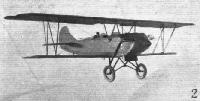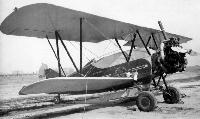
Варианты
- Travel Air - 1000 / 2000 / 4000 - 1925 - США
- Curtiss-Wright - CW-14 - 1931 - США
- Besler - Steam aircraft - 1933 - США
Travel Air. Самолеты
Компания "Travel Air Manufacturing Company" была образована в Уичите, штат Канзас, в конце 1924 года такими известными в авиации личностями, как Уолтер Бич, Клойд Цессна и Ллойд Стирман. С такими конструкторами фирма просто обязана была занять достойное место в истории авиации.
К сожалению, компания успешно просуществовала только до конца 1920-х годов, пока не разразился экономический кризис. В дальнейшем фирму поглотила компания "Curtiss-Wright Corporation".
Первым самолетом фирмы стал спроектированный в 1925 году Travel Air 1000 - традиционный биплан с мотором Curtiss OX-5 мощностью 90 л. с., рассчитанный на перевозку двух пассажиров в открытой кабине; летчик был размещен в задней открытой кабине.
Travel Air 2000 отличался от предшественника рядом конструкционных изменений и увеличенной дальностью полета. Самолет массово строился до 1930 года в нескольких вариантах: SC-2000 (160-сильный мотор Curtiss C-6), Travel Air 3000 (150- или 180-сильный мотор Hispano-Suiza Model A или Model E), Travel Air A-4000 (150-сильный мотор Axelson), B-4000 (220-сильный мотор Wright J-5), BC-4000, гидросамолеты SBC-4000 и C-4000 (170-сильный мотор Challenger), E-4000 (165-сильный мотор Wright J-6), K-4000 (100-сильный мотор Kinner K5), W-4000 (110-сильный мотор Warner Scarab), B9-4000 (300-сильный мотор Wright J-6-9), Travel Air 8000 (120-сильный мотор Fairchild-Caminez), Travel Air 9000 (125-сильный мотор Ryan-Siemens), Model 4D (225- или 240-сильный мотор Wright J-6) и последний сертифицированный вариант - Model 4P (140-сильный мотор ACE La.1).
<...>
ТАКТИКО-ТЕХНИЧЕСКИЕ ХАРАКТЕРИСТИКИ
Travel Air E-4000
Тип: трехместный биплан
Силовая установка: один мотор воздушного охлаждения Wright J-6 мощностью 165 л. с.
Летные характеристики: максимальная скорость 193 км/ч; практический потолок 3960 м; дальность 1046 км
Масса: пустого 769 кг; максимальная взлетная 1226 кг
Размеры: размах крыла 10,06 м; длина 7,34 м; высота 2,72 м; площадь крыла 26,85 м2
Описание:
- Travel Air. Самолеты
- Flight, February 1926
THE "TRAVEL AIR SPECIAL"
Фотографии
-
Aeroplane Monthly 1989-05 / H.Levy - Travel Air 4-D
Регистрационный номер: NC9917 [6] Owned by American Airlines Boeing 727 pilot Bill Plecenik, Travel Air 4-D NC9917 is based at Van Sant Airport, Erwinna, Pennsylvania. Built in December 1929 as a Model B9-4000 Speedwing, NC9917 was converted to Model 4-D standard during the Thirties. It is powered by a seven-cylinder Wright Whirlwind R-760-8, and has a cruising speed of 105 m.p.h. After serving as a trainer, Pepsi Cola skywriter and cropduster, the wooden and steel-tube three-seater was stored for many years.
-
Aeroplane Monthly 1989-05 / H.Levy - Travel Air 4-D
Регистрационный номер: NC9917 [6] Bill Plecenik's classic Travel Air 4-D NC9917, based at Van Sant Airport in Pennsylvania
-
Aeroplane Monthly 1989-05 / H.Levy - Travel Air 4-D
Регистрационный номер: NC9917 [6] -
Aeroplane Monthly 1989-05 / H.Levy - Travel Air 4-D
Регистрационный номер: NC9917 [6] -
Aeroplane Monthly 1989-05 / H.Levy - Travel Air 4-D
Регистрационный номер: NC9917 [6] -
Air Enthusiast 1998-01 / G.Jones - Born in the USA
Регистрационный номер: NC8877 [3] Lonnie and Josie Autry’s award-winning Travelair 4000 NC8877.
-
Air Enthusiast 1998-03 / Round-Out
Регистрационный номер: NC8877 [3] -
Air Enthusiast 1998-01 / G.Jones - Born in the USA
Регистрационный номер: NC8877 [3] Unique 1929 biplane quartet, Travelair 4000 NC8877 in PAT colours in the foreground with three Fairchild KR.21s - left to right N107M, NC236V and NC209V - in the background.
Другие самолёты на фотографии: Kreider-Reisner C-4 / C-6 Challenger - США - 1928
-
Aeroplane Monthly 2000-01 / M.Oakey, T.Harmsworth - News
Регистрационный номер: NC4006 Photographer Norman Pealing has produced a calendar with a millennial feel: each of the 12 aircraft illustrated incorporates “2000” in its type name. Aircraft featured include 1927 Travel Air 2000 NC4006, illustrated here, the NDN Fieldmaster 2000, Mirage 2000 and Eurofighter 2000. For details call 01276 856039.
-
Flight 1926-02 / Flight
THE "TRAVEL AIR SPECIAL": An American four-seater commercial biplane, fitted with a Curtiss C 6A 160 h.p. engine.
-
Flight 1925-11 / Flight
THE FORD RELIABILITY TOUR: Some of the competing machines which took part in the 1,900-mile reliability air-tour in America for the trophy presented by Mr. Edsel B. Ford. (2) The Travel Air.
-
Flight 1927-11 / Flight
HARVARD UNIVERSITY FLYING CLUB: (No. 3) The new Travel-Air biplane fitted with a Curtiss O XX6 (100 h.p.) engine, now used, which was obtained this summer by the members when an opportunity arose of disposing of the old machine advantageously.
-
Flight 1927-11 / Flight
HARVARD UNIVERSITY FLYING CLUB: (No. 2) The first machine that the members used and owned. It is a Travel-Air biplane.
-
Aviation Historian 17 / A.Tincopa - Wings over Peru
An interesting collection of military and civil aircraft at Piura airfield in north-western Peru in early 1931. From left to right: a pair of Stearman C3Rs operated by the CAP’S Escuadrilla de Transporte (Transport Flight); Faucett’s Stinson SM-6B OA-BBE/ No 5; Travel Air 6000B OA-BBG/No 7, also operated by Faucett, and an unregistered civil Travel Air 2000.
Другие самолёты на фотографии: Stearman C1 / C2 / C3 / 4E / 6 Cloudboy - США - 1927Stinson Detroiter / Junior - США - 1927Travel Air 5000 / 6000 - США - 1926
-
Aeroplane Monthly 1984-02 / F.Winstanley - Those Celluloid Flying Fools (2)
One of the Timm modified Travel Airs (Model 3000) at Glendale in the late Thirties.
-
Aviation Historian 7 / American Classics
Heroes of the front line - as long as the front was near Hollywood. As the studios continued to make films with the first war in the air as a backdrop, attrition began to take its toll on the poorly-maintained original World War One-vintage aircraft frequently called into filming duty, and many were either wrecked or grounded owing to lack of airworthiness. When Hollywood sought replacements (if they were looking for the least bit of accuracy), the biplane of choice came from Travelair, based in Wichita, Kansas. Travelair aircraft indeed owed much to Germany’s Great War veteran, the Fokker D VII; both had a welded-steel-tube fuselage and N-struts, and with a few minor modifications, the “Wichita Fokker” proved to be an effective stand-in for the real thing.
-
Мировая Авиация 246
Самолеты семейства Travel Air 4000 близки серии Model 3000, но вместо моторов жидкостного охлаждения на них стояли звездообразные двигатели воздушного охлаждения, обеспечившие лучшие летные данные.
-
Aeroplane Monthly 1990-08 / M.Oakey - Grapevine
Регистрационный номер: N8134 Photographed recently at Lodi, California, Travel Air 4000 N8134 is one of four immaculate examples still being used for cropdusting by Precissi Flying Service. Built in 1929, N8134 must, along with its sisters, be the oldest agricultural aircraft still in use ... unless any readers know otherwise?
-
Авиация и Время 2016-03 / В.Мараев - Гетманские аэропланы в Америке
Регистрационный номер: NC8718 -
Jane's All the World Aircraft 1980 / Encyclopedia of Aviation - Aircraft A-Z - v5
Travel Air biplane of 1929.
-
Air Pictorial 1957-12 / R.Straub - Fly-In photographs
The Travelair E.4000, finished a brilliant blue with yellow trim, took the first prize for the best antique;
-
Flight 1940-02 / Flight
QUITE CRAZY, BUT IT DOES NEED ACCURATE FLYING. "Squeek" Burnett flies under the tape instead of breaking it at Miami. The tape was only 12ft. from the ground.
-
Flight 1930-01 / Flight
On the left, a Travel Air "4,000" about to leave for Quebec with passenger and luggage. Right, another Travel Air machine at St. Hubert Airport, with the Airship mooring mast in the background.
-
Flight 1930-01 / Flight
The fleet of Travel Air monoplanes and biplanes lined up in front of the Government hangar at St. Hubert Airport.
Другие самолёты на фотографии: Travel Air 5000 / 6000 - США - 1926
-
Aeroplane Monthly 1989-05 / H.Levy - Travel Air 4-D
Регистрационный номер: NC9917 [6] The Travel Air's commodious cockpit - note the leather upholstery up underneath the decking.
-
Aeroplane Monthly 1993-06 / M.Oakey - Grapevine
Not a Fokker D VII, but a Travel Air 2000 modified to look like one. Used in many films, including Dawn patrol, it carries the markings of a D VII flown by Udet.
- Фотографии

























